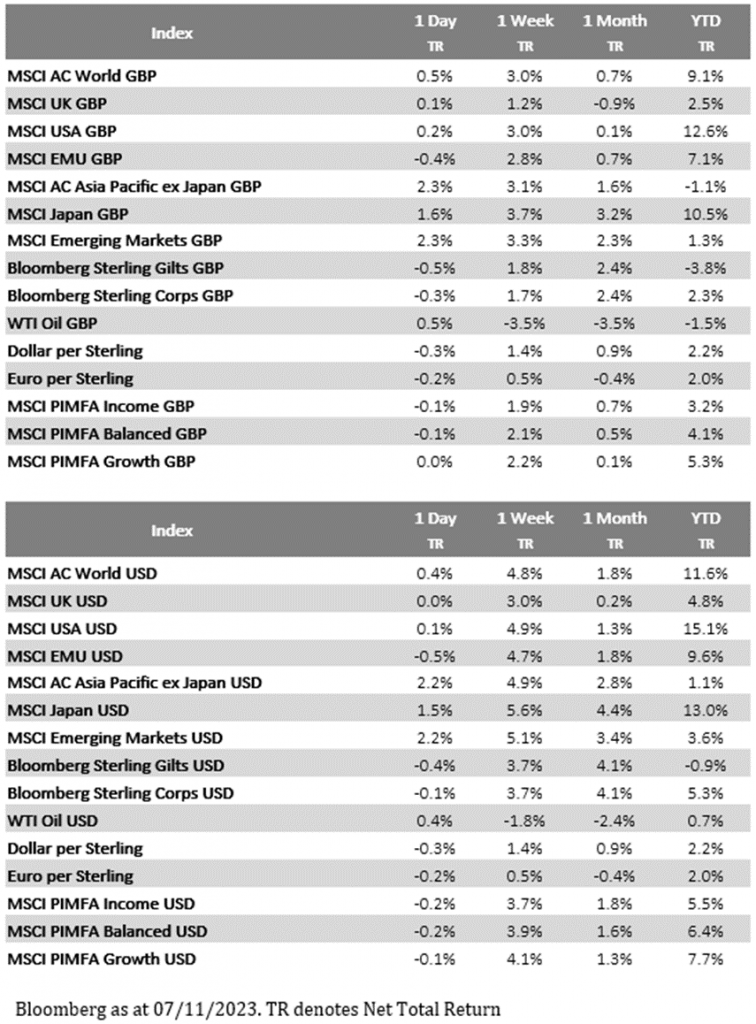Please see below, Brooks Macdonald’s Daily Investment Bulletin which outlines the key factors currently affecting global markets. Received this morning – 07/11/2023
What has happened?
There was a bit of pushback against last week’s hopes of peak US interest rates and imminent cuts yesterday. The bond pressure was particularly acute in shorter dated bonds with the 2-year US Treasury yield rising by almost 10bps. Despite these moves, the US equity market managed to stay in positive territory for the day however below the surface, the US small cap index suffered under the weight of rising yields.
Central banks
Market expectations for a Fed interest rate hike rose slightly yesterday as did expectations of the central bank’s rate at the end of 2024. One of the drivers behind this was commentary from the Minneapolis Fed’s Kashkari who is one of the more hawkish members of the central bank. Kashkari said that ‘we need to let the data keep coming to us to see if we really have got the inflation genie back in the bottle’. A warning against declaring victory too early. On that note, the Reserve Bank of Australia lifted its cash rate yesterday in response to a slower-than-expected decline in inflation.
Lending conditions
The Senior Loan Officer Opinion Survey (SLOOS) from the Federal Reserve also captured the market’s attention. The survey is an important barometer of lending standards and therefore by extension the difficulty, or ease, of obtaining credit in the US economy. The survey showed some improvement in US banks’ willingness to lend however mortgage availability remained poor with the lending standards actually tightening for that component. While there was some improvement within the survey, the tight standards are still at levels previously associated with a recession.
What does Brooks Macdonald think?
The improved SLOOS data yesterday helps support an improving economic narrative however the standards, in aggregate, act as a break on the US economy. Should this tightness continue, it raises the risk of a hard economic landing. Until these lending standards ease, companies that have significant walls of upcoming bond or loan maturities, and therefore need to refinance, will find themselves at a material disadvantage to those who have secured longer term financing.

Please continue to check our Blog content for advice and planning issues and the latest investment, markets and economic updates from leading investment houses.
Alex Kitteringham
7th November 2023
